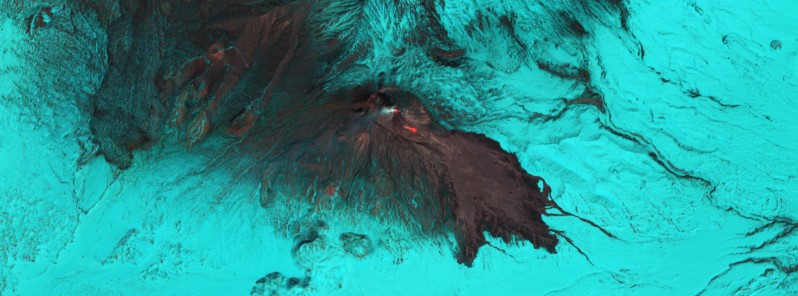Strong explosion expected at Bezymianny volcano, alerts raised

Activity under the Bezymianny volcano began increasing on November 18, 2016, prompting KVERT to increase the Aviation Color Code from Yellow to Orange yesterday. Strong ash explosions up to 15 km (49 200 feet) could occur at any time. This volcano was considered extinct until a powerful eruption in 1955.
Satellite data by KVERT showed an increase of the thermal anomaly temperature beginning on December 5. The temperature of the thermal anomaly significantly grew on December 13, most likely as a result of an extrude of lava blocks at the top of the dome, that prepares a strong explosive eruption of the volcano.
In their Volcano Observatory Notice for Aviation (VONA) released 01:22 UTC on December 13, KVERT said the Aviation Color Code was increased to Orange.
"The activity of the volcano gradually increases. Strong ash explosions up to 15 km (49 200 feet) could occur at any time during this day or next days. Ongoing activity could affect international and low-flying aircraft," the observatory warned.
Bezymianny volcano is one the most active volcanoes of the world. In 1955, for the first time in history, it started to erupt and after six months it produced a catastrophic eruption with the total volume of eruptive products over 3 km3.
The lava dome began to grow in the explosive caldera immediately after the catastrophe and still continues. 44 Vulcanian-type strong explosive eruptions of Bezymianny occurred between 1965 – 2012.
The last explosive eruption of Bezymianny volcano occurred on September 1, 2012.
Geological summary
Prior to its noted 1955-56 eruption, Bezymianny had been considered extinct. The modern volcano, much smaller in size than its massive neighbors Kamen and Kliuchevskoi, was formed about 4700 years ago over a late-Pleistocene lava-dome complex and an ancestral edifice built about 11,000-7000 years ago. Three periods of intensified activity have occurred during the past 3000 years.
The latest period, which was preceded by a 1000-year quiescence, began with the dramatic 1955-56 eruption. This eruption, similar to that of St. Helens in 1980, produced a large horseshoe-shaped crater that was formed by collapse of the summit and an associated lateral blast. Subsequent episodic but ongoing lava-dome growth, accompanied by intermittent explosive activity and pyroclastic flows, has largely filled the 1956 crater.
Featured image: False color image of Bezymianny acquired April 22, 2011. Credit: NASA/EO-1 ALI

Commenting rules and guidelines
We value the thoughts and opinions of our readers and welcome healthy discussions on our website. In order to maintain a respectful and positive community, we ask that all commenters follow these rules.